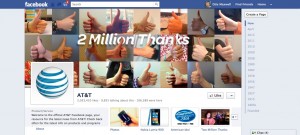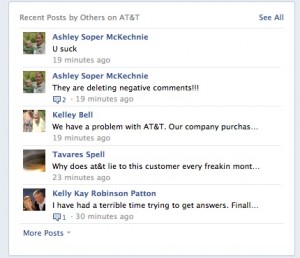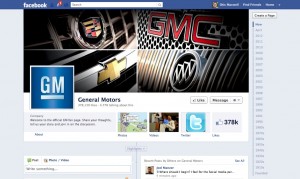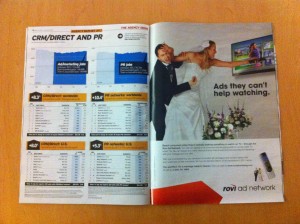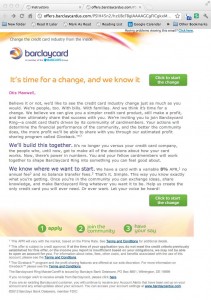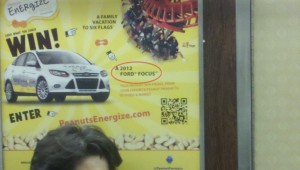The card is in my hands, and I’m excited to be using the first crowdsourced credit card. Well… actually I’m reacting to the message on the card carrier document I received that begins “Are you excited? Because we’re excited.” This represents one of my pet peeves about advertising copywriting. “Excited” is a result. I will get excited if you give me reasons to get excited. Unless you are selling certain products which are beyond the purview of this blog, getting excited is not a benefit by itself.
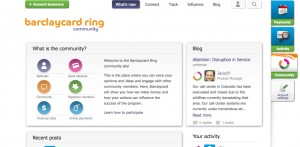
But let’s move past that. I’ve now registered the card on the Barclaycard.com website where I find the top level page shown here. The circles on the left are badges you can earn for such things as referrals, getting paperless statements and participating in the community. You also have a “ring” next to your profile that gets brighter with increased participation and there are different levels of participation as well. (Right now I’m Bronze, having just signed up.) I have a client who operates a similar sponsored community and this seems to follow the same best practices. The recognition options are too complicated for you to make a plan for progressing through the ranks, which is exactly the idea. You just get busy and over time your profile is festooned with badges and awards and presumably additional functionality will be revealed.
In my previous post on this card I described my perception of it: a rewards card with a low interest rate, in which the rewards program is determined in part by the community. I misunderstood. In a blog post called “Barclaycard Ring, where are the rewards?” product manager JaredY says there aren’t likely to be any rewards because at the low interest rate (prime + 4.75% which currently makes it 8%) and no annual fee, the bank can’t afford them.
The cardmembers are fine with that. So far the comments are almost universally positive. These early adopters (at present there are just about 1000 active cardholders, according to JaredY) love the idea of the card, love the low APR, love the option to donate some of the “Giveback™” to charities, and aren’t particularly concerned about the way that Giveback is calculated. One poster stated that he just liked being part of the community, and any reward at all was a bonus (sort of like belonging to your local grocery coop, maybe).
Today I’m going to put this plastic into action. Stay tuned…
UPDATE: There’s currently an issue on the barclaycardus.com website that is going to be a problem in building the community. If your password is not recognized and you click on “lost your password?” the only option given is to pick a new user name; you can’t get a “set a new password” email as with most sites. If I can’t keep my user name then it’s going to be a lot harder to establish my identity in the community and accumulate badges. (Another issue is that the password for the new username is not recognized either; hopefully this is just a temporary glitch.) Will update again if this is fixed.
